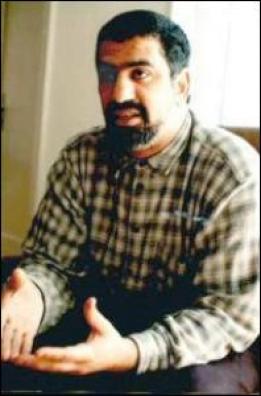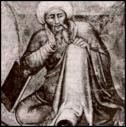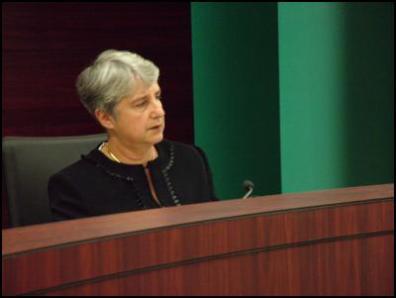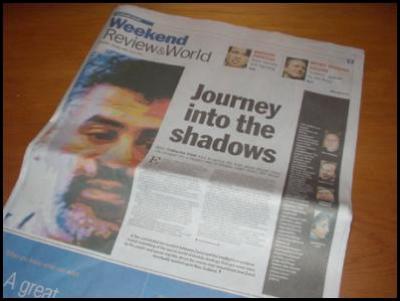Gordon Campbell: Zaoui in the 1990s, and since
Gordon Campbell: The SIS Case, Part
Two : Zaoui in the 1990s, and since

The way the SIS
portrays the world in their annual reports, al Qaeda are not
the micro-managers of world terrorism any more – they’re
more like its aspirational brand leaders. Terrorist strikes
are no longer being directed from some cave in the tribal
areas of Pakistan. The whole Islamic terrorism effort has
been localized, which means a terrorist franchise could pop
up near you at any time, like Starbucks. Luckily the SIS
know how just how this happens, and they’re ready for it.
 For one thing, the terrorist threat that they
see facing New Zealand is almost entirely Islamic –
staying out of the Iraq apparently did us no good whatsoever
- and local or not, the threat still appears wedded to the
Bin Laden style of leadership. “Domestic Islamic extremism
does not grow in a vacuum,” the SIS warned in its annual
report for 2005. “It needs leaders and instigators who
attempt to radicalise people ; organisers who play a key
role in the development of operational cells (but who may
themselves not become involved in terrorist operations); and
lastly, a committed cadre of extremists who are willing to
engage in violent jihad.”
For one thing, the terrorist threat that they
see facing New Zealand is almost entirely Islamic –
staying out of the Iraq apparently did us no good whatsoever
- and local or not, the threat still appears wedded to the
Bin Laden style of leadership. “Domestic Islamic extremism
does not grow in a vacuum,” the SIS warned in its annual
report for 2005. “It needs leaders and instigators who
attempt to radicalise people ; organisers who play a key
role in the development of operational cells (but who may
themselves not become involved in terrorist operations); and
lastly, a committed cadre of extremists who are willing to
engage in violent jihad.”
Not accidentally, this is the kind of threat that Ahmed Zaoui is alleged to pose. Islamic to the core. Charismatic leadership material and cunning enough to let others do the dirty work from a plausible distance. Is he, could this man become, the inspirational mastermind for acts of jihad – committed within New Zealand or launched from our safe haven by his shadowy associates ? Assuming of course, we were ever foolish enough to let him stay in New Zealand.
For the next few weeks, the SIS Inspector General will be reviewing in secret that the so called ‘open evidence’ against Zaoui that is already out in the public domain. After a recess and more negotiations about what is and isn’t to be kept secret, the classified evidence part of the case will then begin. The Inspector-General’s review decision is set to be in the hands of Immigration Minister David Cunliffe by Christmas. The timetable, seems to be being driven by no loftier goal than ensuring Labour do not have to take the major amount of flak from the Zaoui verdict during an election year – because stay or go, Zaoui’s fate is bound to offend at least some potential Labour voters.
To win its case, the SIS needs to be able to successfully portray Ahmed Zaoui as a one man walking madrassah – a leader, instigator and magnet for budding jihadi. Someone whose presence here would damage our international reputation standing with our traditional allies, who may take a Zaoui in our midst as a sign of us being soft on terrorism. While it is certainly possible to conceive of a radical Islamic mastermind – we’ve all seen the movies - it is far harder to cast this particular individual in the role, for reasons I will try to explain.
For one thing, Zaoui is virtually an accidental politician. He joined the opposition Islamic Salvation Front (FIS) in mid 1991, barely six months before the FIS won the election that triggered the coup that drove him into exile. One of ten children from a Sunni Muslim family, young Ahmed studied religion as a young man in Saudi Arabia before returning to Algeria in the mid 1980s, and becoming briefly caught up in the mounting opposition to the ruling FLN party. By 1991 though, he was both an imam at a mosque and a teacher in religious law both at, and beyond the University of Algiers.
Zaoui’s religious background is as a religious moderate, from three generations of Sufism on his paternal line. Politically, Zaoui and his colleagues at Algiers University were of a generation heavily influenced by the writings of the Algerian sociologist Malek Bennabi ( 1907-1973) who had sought to create a modern fusion between Islam and democracy grounded in Algerian culture. In the very first conversation I had with Zaoui in prison, he urged me to read Bennabi, as the best avenue to understanding his own beliefs. Taken overall, it would be hard to think of an Islamic background that had less in common with radical Islamic fundamentalism. In addition, one could point to Zaoui gregarious personality and sense of humour - nothing about him fits the mould of the dogmatic Muslim fanatic.
The mosque at which Zaoui taught was in a heavily Berber area and this indigenous minority dominated the constituency in which he won election to Parliament in 1991. Conceiving himself to be primarily a FIS adviser on religious matters, Zaoui had kept his distance from political campaigning, but won convincingly anyway. Then came the coup, and exile, and his life changed forever.
The SIS of course, doesn’t need to engage with Zaoui as a person. What it has to do is build a plausible structure – and invoke the credibility of the security agencies overseas that supplied it with the relevant bricks and mortar. At worst, that is all that some Inspectors - General would care to consider. Truth being more of a bonus in the review context, than a strict necessity. As the investigating judge in the Mahjoub security case in Canada said a few years ago, all that needed to be proven was “whether there existed reasonable grounds to believe certain things, as opposed to the existence of the facts themselves.”
Luckily for Zaoui, the New Zealand courts have set our own Inspector-General a much higher standard. As I mentioned yesterday, I don’t think that Zaoui’s European convictions provide the SIS with a knockdown argument in favour of confirming the certificate, and gave some reasons why. Somehow though, I can’t believe that a retired judge such as Neazor wouldn’t be feeling some level of annoyance at the RSAA’s dismissal of those convictions, either.
Certainly, the RSAA did not dismiss the European convictions ‘out of hand’ as Helen Clark once stupidly asserted. True the RSAA were clearly unimpressed with the palpable flaws in the way the cases were conducted, and fair enough. The RSAA would also have noted the relatively light sentences imposed.
First and foremost though the RSAA – and by extension, Neazor - could be looking at Zaoui’s particular role in these offences – because that goes to the heart of their analysis. The relevant factor in determining refugee status being not the headline conviction, but what acts that Zaoui himself committed in the process – because that is what will or won’t trigger the exclusionary clauses in the Refugee Convention.
Neazor might therefore feel a little less tetchy if he could see the similarities ( and not the differences) between his procedures and that of the RSAA. It is not that the RSAA doesn’t respect what happens in foreign jurisdictions. It is about whether an individual has personally done things of such a heinous nature as to absolve us of our obligation not to send him back to almost certain torture and death. Does Zaoui being related to - but not committing – actions that earned only a suspended sentence, and for which France has never ever bothered to ask anyone for his extradition, really pass such a test? I don’t think so, and neither did the RSAA.

Of course Neazor - thanks to previous court rulings in New Zealand that have made this quite clear - doesn’t have to consider the consequences for Zaoui of his deportation. The European convictions alone can’t win the case for the SIS, but they can certainly help to fill in a picture. Yet they will do so only if the SIS can succeed in successfully portraying Zaoui to the Inspector-General as a radical Islamist hardliner.
If I were the SIS I’d try to hinge that argument on the following allegations : one, I’d try to allege that Zaoui is and always has been a member of the terrorist GIA group. Two that he rejected the mid 90s truce offered by the junta. Three, that he rejects the current amnesty in Algeria. And four, that his religious and political roots are in Medea, among the Berbers. Fertile grounds for symnpathisers with first the GIA, and now its replacement terrorist entity the GSPC, which recently renamed itself Al Qaeda in the Maghreb. Say no more.
OK, that last one is a stretch. The GIA allegation may look just as ridiculous, but its not as easy to dispel as it seems. Lets leave aside the confused period in the mid 1990s where the GIA was lead by the notorious Djamel Zitouni, who is now widely regarded as having been a double agent working for the junta. In that capacity, Zitouni killed many FIS leaders and sympathizers, and wiping out entire GIA factions within the GIA that he opposed. This was the same chaotic when Zaoui got named by the GIA as part of its ruling ‘caliphate’ in one bogus document, and was singled out for assassination by them in virtually the same breath. The whole period is an analytical minefield for the credulous.

The SIS would do better to focus their secret evidence on one element of this period, and seek to finger Zaoui as a member of a faction – it includes Anwar Haddam, Mohammad Said and Abderazzek Redjam – who left the FIS and went over to the GIA in 1994. Said and Redjam were killed by Zitouni in July 1995. An Algeria Watch report ( 27 December 2001) carries a poignant account of their deaths by Ali Benhadjar, who goes on to describe how his brigade managed to kill Zitouni himself, a few months later. Anwar Haddam renounced the GIA in the wake of these internecine disputes, and rejoined the FIS in 1995.
Said had been a university colleague of Zaoui. The SIS wouldn’t may well seek to portray Zaoui as part of this Haddam/Said/Redjam faction – as the GIA sympathizer within the FIS who stayed behind and saved his neck, but who never really recanted his hardline stance. Someone with that mindset could then point to the way Zaoui also opposed a ‘truce’ offered by the junta to the armed opposition groups in the mid 1990s.
Zaoui did indeed oppose this ‘truce’ offer – but on the grounds that because the offer was less a truce than a call for surrender, since it contained no mechanism for a political settlement, and was bound to collapse for that reason. Which it quickly and subsequently did. Finally, the hardline stance could also be invoked to explain why Zaoui remains sceptical about the Algerian amnesty on offer by the regime today. No matter again, that Amnesty and Human Rights Watch haved voiced the same misgivings. The problem here again, is the lack of a meaningful framework for peace and reconciliation. The amnesty seems more about ensuring immunity for the generals, than providing a workable framework for resolving the human rights violations and disappearances.
For all the obvious flaws of the ‘hardline’ the mere repetition may be enough to convince the review. Add the points I’ve sketched out above to the European convictions and you do have a rosary chain of allegations to work with. The SIS will have noted all of these incidents I’m sure, and will have similarly speculative material within the secret submissions. In the real world though, the examples I’ve cited pose many problems for the SIS.
Let me cite a few. At the same time this supposed ‘ hardline’ activity was taking place, Zaoui had been invited by the Catholic San Egidio platform in Rome to help put together a peace and reconciliation process to end the Algerian conflict. If Zaoui had been GIA or a militant he would never have been chosen for that role of mediation. San Egidio ultimately failed, but only because because the junta refused to engage with it.
From the outset, Zaoui has always fiercely denied he has ever been a GIA member. The interesting thing is that Anwar Haddam – who as I said, did publicly join the GIA for a while - is now living and working in the US. It seems ironic that Zaoui should be imprisoned here and subject to this risk security process after a decade or more of denouncing the GIA - while a bona fide confessed former GIA member and senior FIS leader is teaching at a US university, even after 9/11. Couldn’t this suggest the SIS has no earthly idea of how to treat the information central to the Zaoui case?
Even if Zaoui HAD been GIA that also wouldn’t help the SIS all that much these days in its efforts to prove that Zaoui could still pose a risk to New Zealand IN FUTURE, if allowed to stay here. In January 2005, the Algerian Interior Minister boasted to the local Algerian media that to all the GIA virtually no longer exists. It had been wiped out, down to less than 20 members.
Which means that if the SIS really do want to keep the flame of Zaoui’s alleged radical intransigence alive and project it into being a future risk, a GIA link can no longer do the trick. Somehow, they are going to have to come up with a plausible between Zaoui and the GIA’s former rival and successor as a terrorist threat, the GSPC group – because from there, its plain sailing to al Qaeda and Bin Laden. It would certainly be hilarious to be a fly on the wall when the SIS try to unwrap that particular bonbon of speculative intelligence info in front of Neazor. No wonder they want to keep these hearings secret. Tomorrow : Zaoui’s intellectual mentor, Malek Bennabi
 Disclosure : Gordon Campbell now
works as a media officer for the Green Party. He has been
writing about the Ahmed Zaoui case since 2003.
Disclosure : Gordon Campbell now
works as a media officer for the Green Party. He has been
writing about the Ahmed Zaoui case since 2003.
ENDS


 Eugene Doyle: Before It’s Too Late - Reimagine New Zealand’s Military Future
Eugene Doyle: Before It’s Too Late - Reimagine New Zealand’s Military Future  Binoy Kampmark: Gender Stunts In Space - Blue Origin’s Female Celebrity Envoys
Binoy Kampmark: Gender Stunts In Space - Blue Origin’s Female Celebrity Envoys Richard S. Ehrlich: A Deadly Earthquake & Chinese Construction
Richard S. Ehrlich: A Deadly Earthquake & Chinese Construction Ian Powell: It Does Matter To Patients Whether They Are Operated In A Public Or Private Hospital
Ian Powell: It Does Matter To Patients Whether They Are Operated In A Public Or Private Hospital Gordon Campbell: On Marketing The Military Threat Posed By China
Gordon Campbell: On Marketing The Military Threat Posed By China Binoy Kampmark: Olfactive Implications - Perfume, Power And Emmanuel Macron
Binoy Kampmark: Olfactive Implications - Perfume, Power And Emmanuel Macron